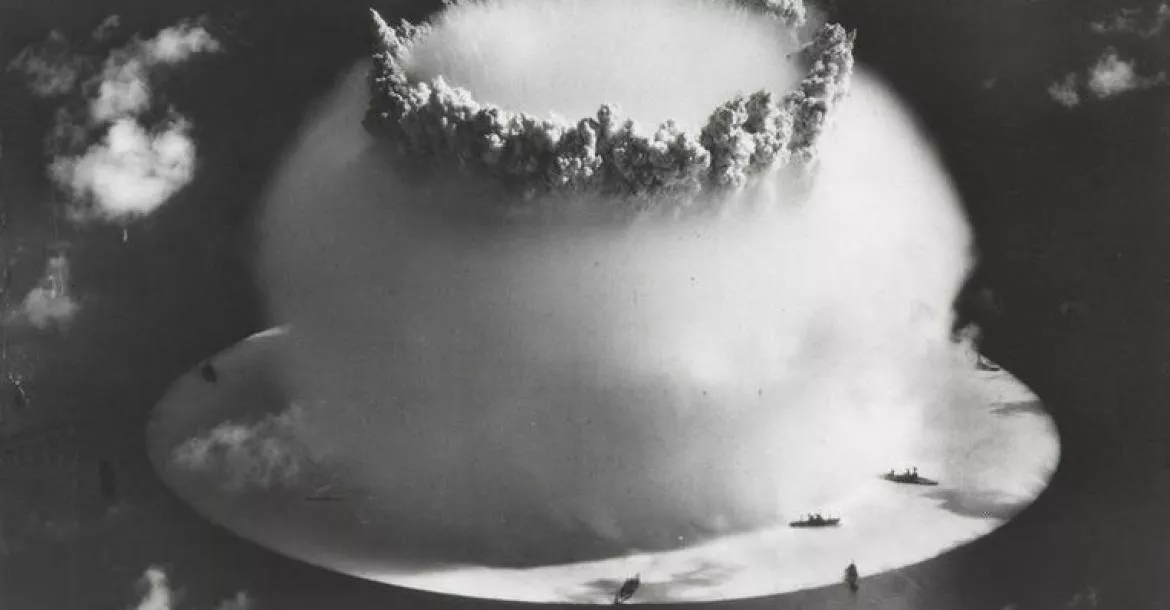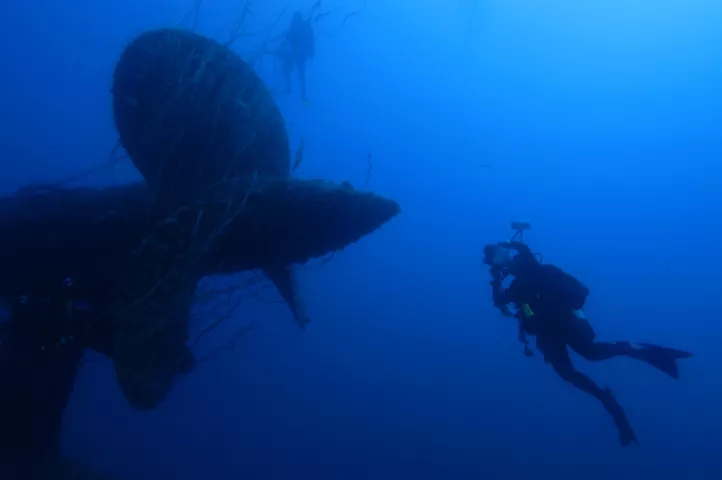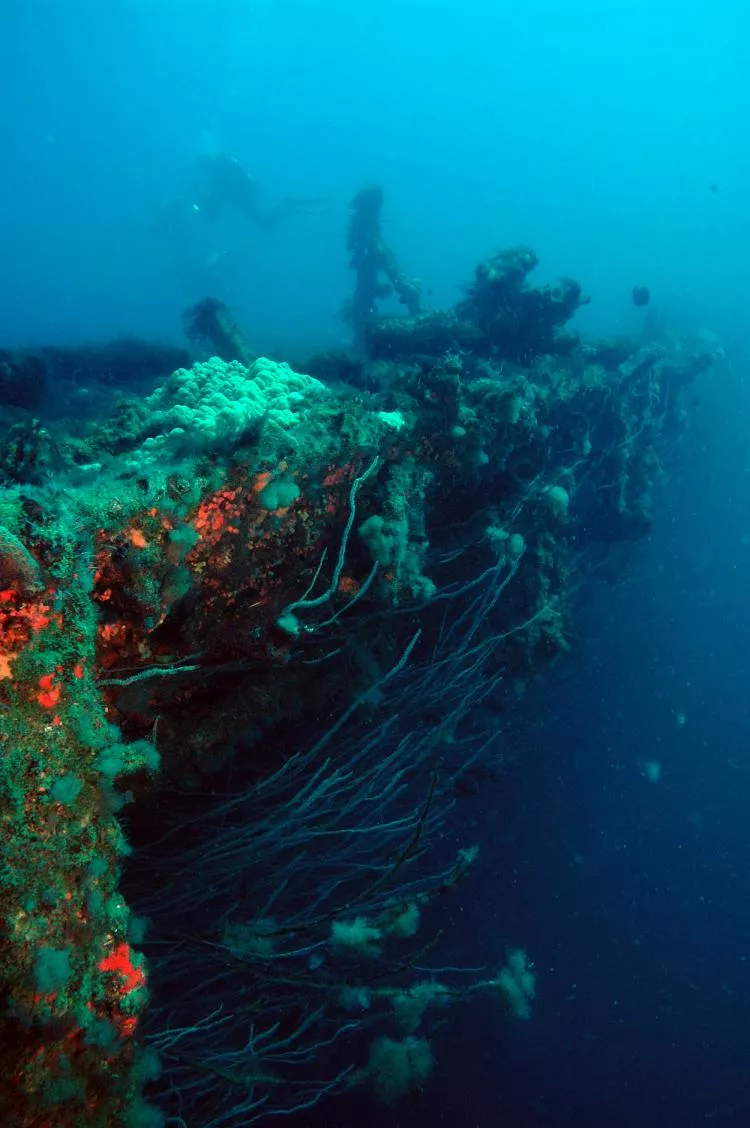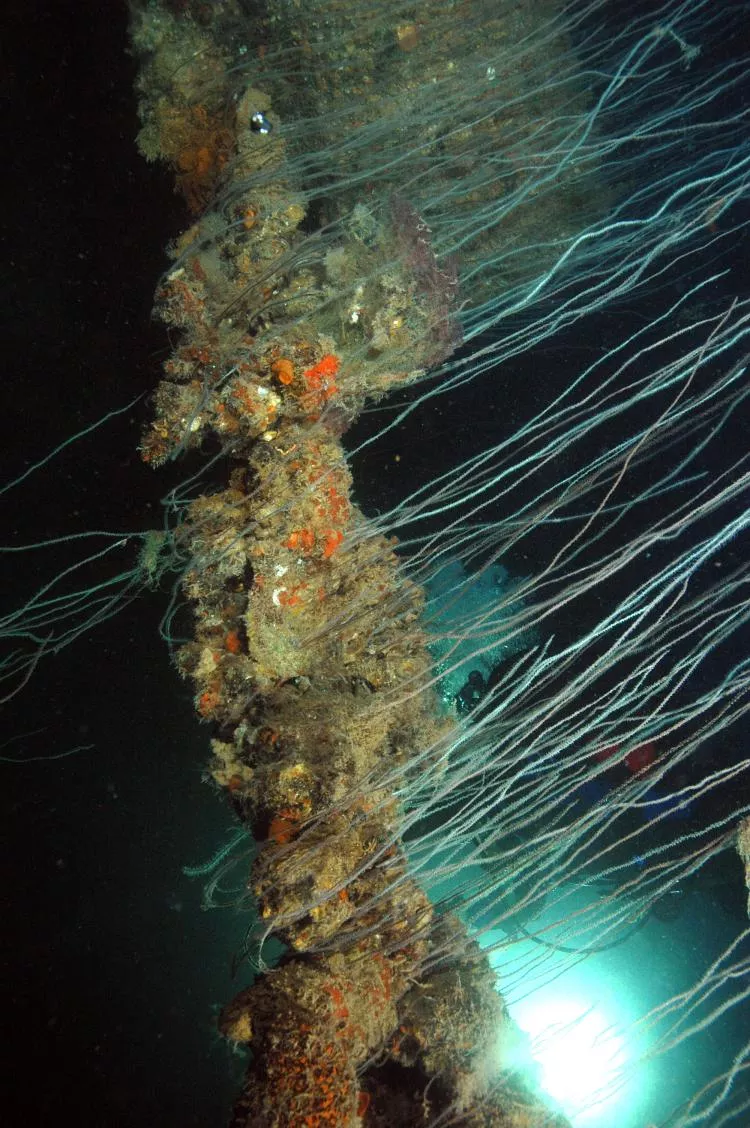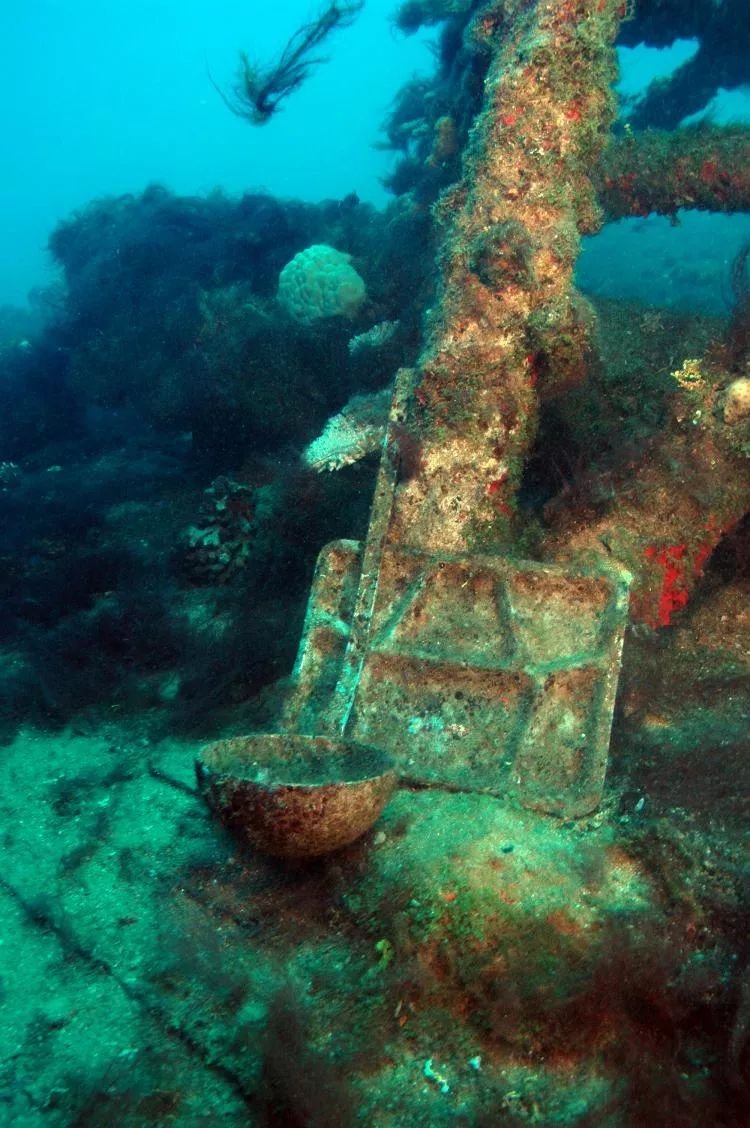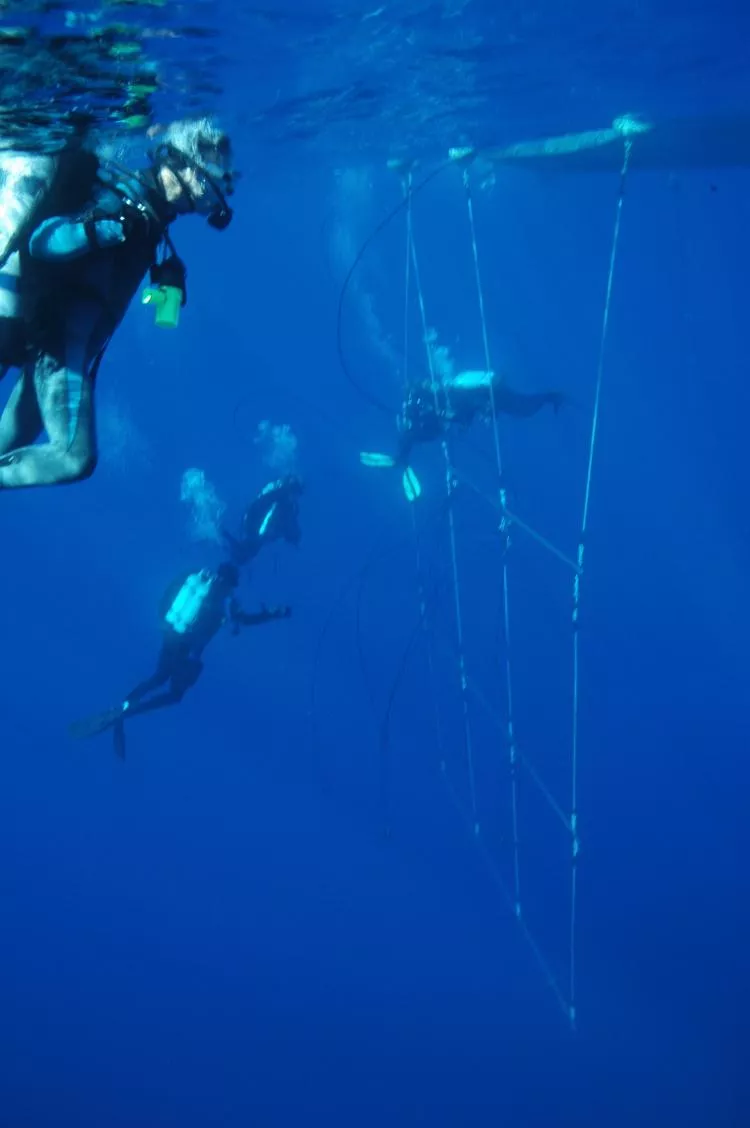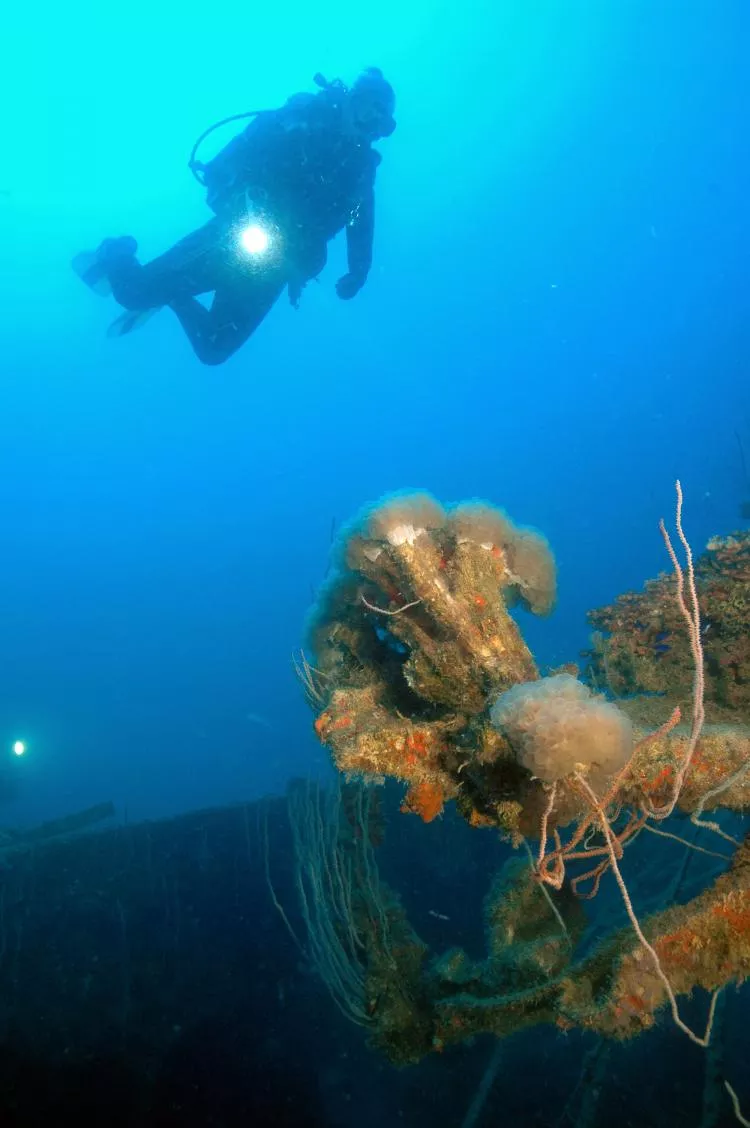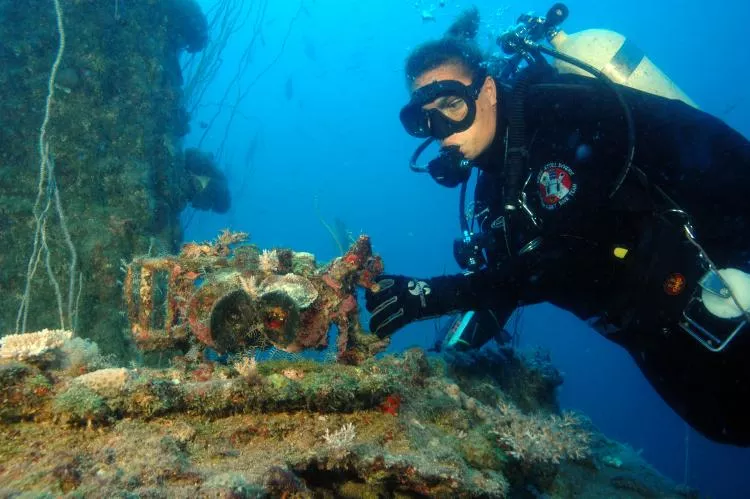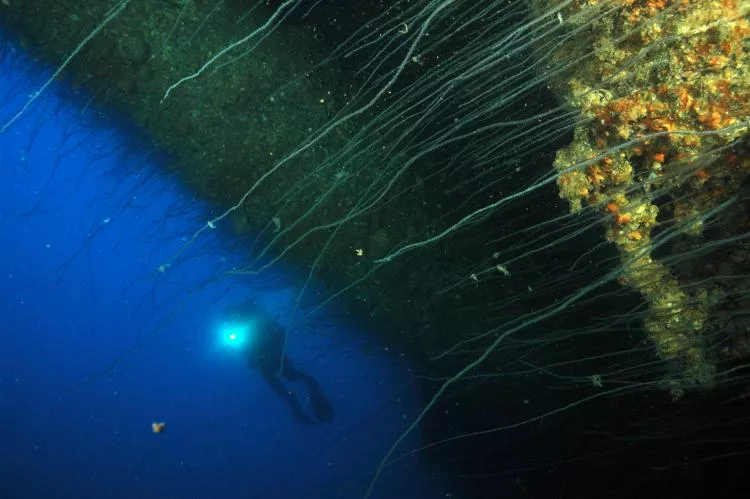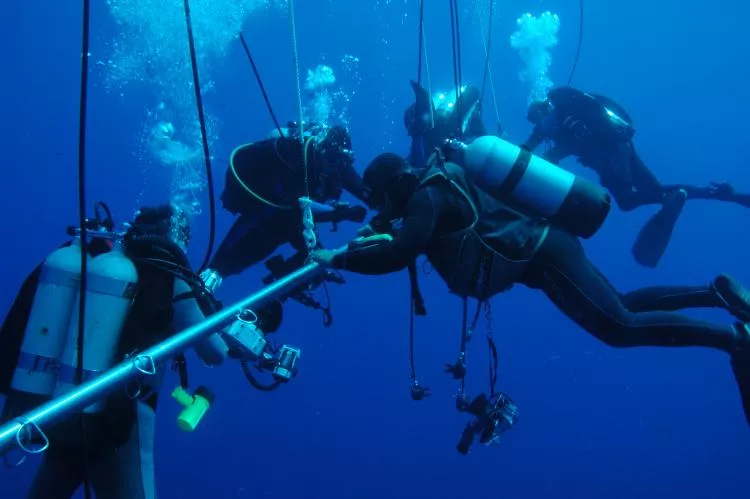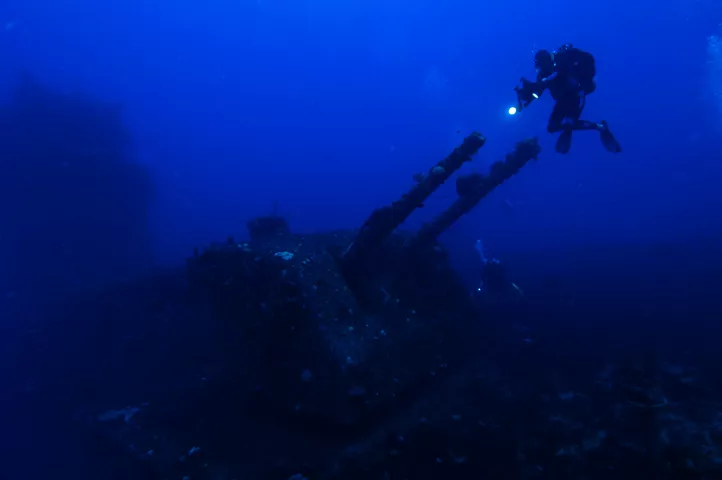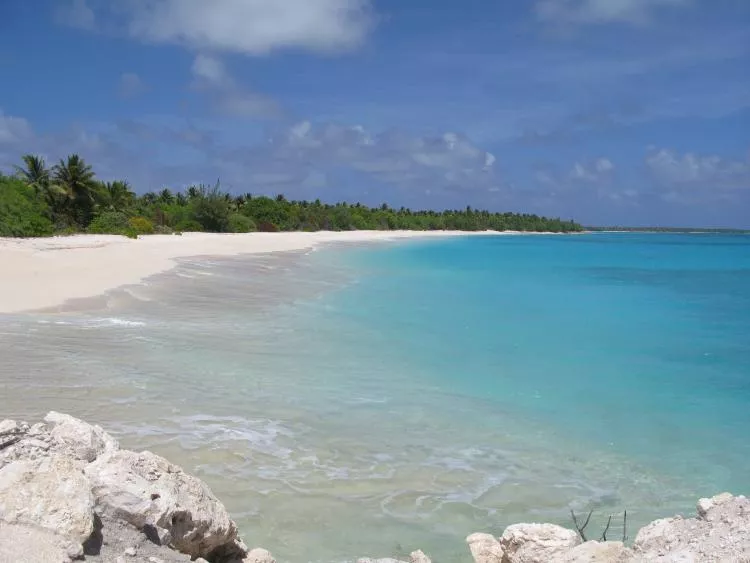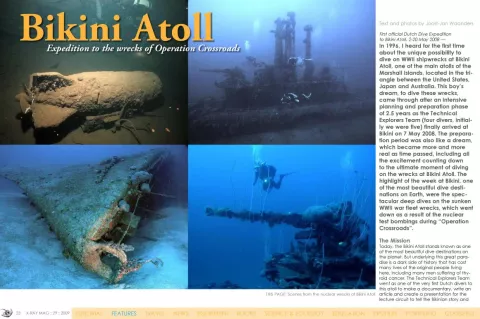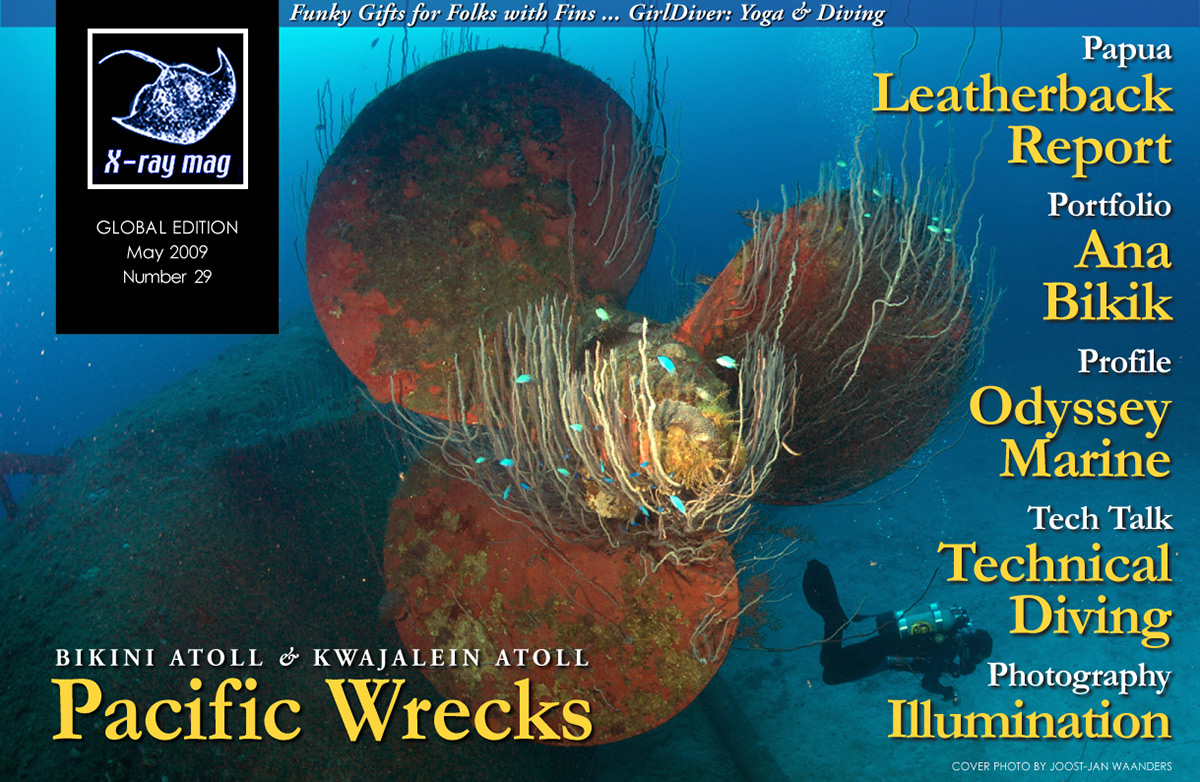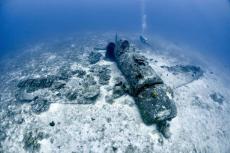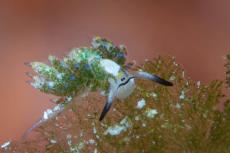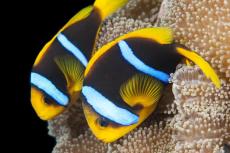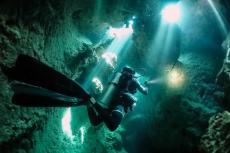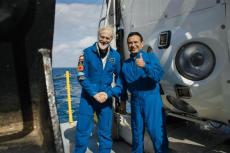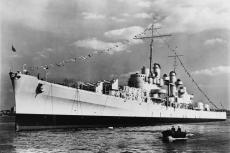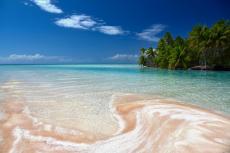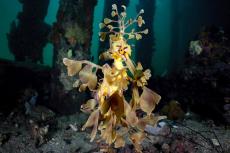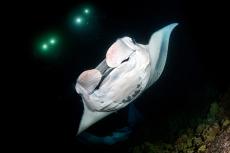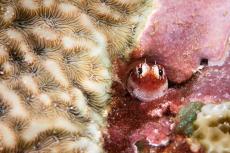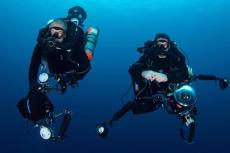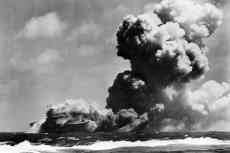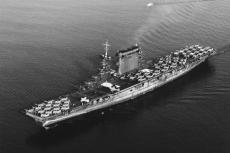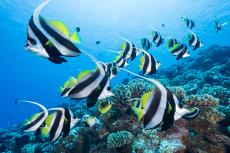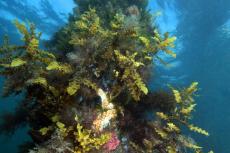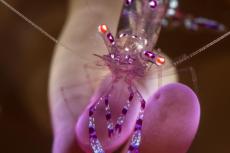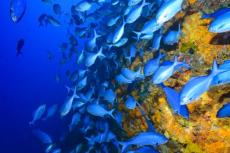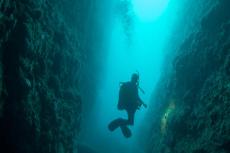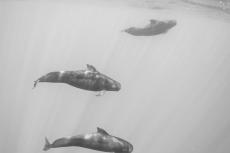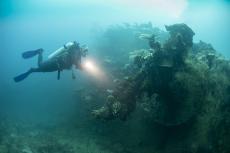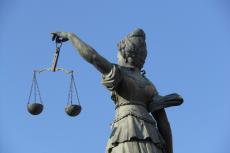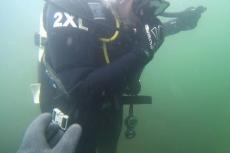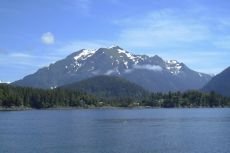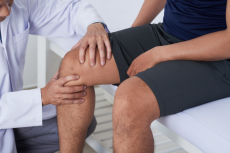In contrast to the Bikini report by the expert Dutch expedition, X-RAY MAG’s Barb Roy shares her perspectives as a recreational diver and wreck junkie on the history and culture of Bikini Atoll.
Contributed by
Although I am the only female in the group, and a travel journalist, I am accepted because I create these escapes and weave a recipe of pleasing surprises, challenging dives and always add a twist of exploration to the mix. The guys are also impressed that I am a grandmother of five and use a single tank to their doubles.
We departed from the northwestern part of the United States (Seattle), just below British Columbia, Canada, and flew to the island of Oahu in the Hawaiian Island chain for our first stopover. It was nice to leave our thick dry suits and heavy weight belts behind.
Unlike most tourists visiting Hawaii, sunbathing on warm sandy beaches and sipping Mai Ties was not on our agenda. No, touring the 887-foot (270-meter) long USS Missouri, an Iowa-class battleship and seeing the sleek steel-hulled USS Bowfin submarine at Pearl Harbor was all we could think about.
You might say it is an indescribable sensation when standing in the midst of the Mighty Mo’s nine 16-inch/50 caliber guns, realizing they are capable of launching 1,800-pound shells (as heavy as small automobiles) over a distance of 23 miles!
Mainly we wanted to get a sense of what the wrecks in Bikini once looked like before they were sent to the bottom of the ocean in 1946, and the USS Missouri did just that.
USS Missouri
The vessel is moored next to the USS Arizona Memorial, another battleship which was sunk during the Japanese attack on Pearl Harbor in December of 1941. This unforgettable time sparked the United States entry into World War II. Over 1,000 sailors and marines lost their lives within the Arizona when it went down. But it was the USS Missouri, now sitting next to the Arizona that hosted the end of WWII when Japan surrendered on 2 September 1945.
The ship’s tour included a chance to see where the crew was housed, their mess hall (food preparation and eating area), the medical facility and engineering departments. We were all in awe of the Combat Engagement Center where the Harpoon Missile System functions were and how they operated, especially the control operations for the 32 armored tomahawk missile launchers. The four 20mm Phalanx CIWS Gatling-style guns and the thick walled hatch into the ships’ Steering Room (reinforced to protect navigational operations) were equally impressive.
“The tour of the USS Missouri was a real high point for me,” said Rob Wilson, a Boeing aircraft maintenance technician, working in the military division, and diver for over 30 years.
“Seeing Pearl Harbor, especially the Arizona Memorial, and standing on the Missouri’s deck where WWII ended when Japan surrendered to General Douglas MacArthur really set the tone for the whole Bikini trip for me.”
The USS Missouri was the last battleship built by the United States as part of an elite group of fearsome ships constructed during naval warfare. Extensive upgrades were made on several occasions throughout the Missouri’s colorful deployments, the last being Desert Storm in 1991 where 28 tomahawks were launched against Iraqi forces. Today the “Mighty Mo” serves as a floating museum and memorial in Pearl Harbor open for daily guided and self-guided tours.
USS Bowfin
Another piece of history worthy of a visit while in Pearl Harbor is the USS Bowfin (SS-287), a Balao class submarine and a survivor of WWII. In 1942, the USS Bowfin was launched, and completed nine war patrols before being decommissioned and opened to the public in 1981 for tours as part of a museum display in the USS Bowfin Submarine Museum & Park. The sub is 312 feet (95 meters) in length and during its day boasted a speed of 20 knots when at the surface. Waterfront Memorial is also located in the park in honor of the 53 American submarines and over 3,500 submariners lost during WWII.
USS Apogon
Similar to the Bowfin is the 312-foot USS Apogon (SS-308), another Balao class diesel-electric submarine resting on the ocean floor as part of the Bikini Lagoon wreck dives. I found myself looking at the Bowfin imagining what it might be like standing next to the Apogon underwater.
Majuro
Before long, we were on our Continental Micronesia air flight to Majuro, the capitol of the Republic of the Marshall Islands in Micronesia. The atoll itself covers an area of 3.75 square miles (9.9 km) and is located in the Central Pacific, about 2,200 miles west of Oahu (five-hour flight) and about 2,600 miles east of Tokyo, Japan. U.S. currency is accepted and
Marshallese and English are spoken here. The Marshall Islands are made up of 1,225 islands and 29 atolls (islands of coral encircling a lagoon). Bikini Atoll is actually 2.3 square miles (6 km), and made up of 36 islands surrounding a huge lagoon.
According to Jack Niedenthal, Tourism Operations Manager for the Bikini Atoll Local Government, stationed in Majuro, the Marshalls are an independent country with a seat in the UN. “The Marshalls have a ‘free association’ relationship with the United States (US). Marshallese citizens do not need visas to go to the US to live and work, and the same goes for Americans coming to the Marshall Islands,” said Niedenthal.
Majuro Atoll was the place we traded Honolulu’s busy rush-hour traffic for deserted island roads where simple lifestyles prevailed and friendly smiles were the norm. Not only does Majuro house the central government and most of the country’s businesses, it has become quite the urban scene with several grocery supply stores, gift shops, hotels and a few good restaurants. All of which made our stay at the Marshall Island Resort (100 room hotel) even more enjoyable. Of course, the 82-84F (28C) degree air and water temperature didn’t hurt!
To pass the time while we waited for our Air Marshall Islands flight leaving for Bikini the next day, Paul Hangartner and I rented sit-on-top dive kayaks and went for a paddle to explore the shoreline within their calm lagoon. Now, Paul works for Boeing delivering new aircraft in their commercial division and is very technically minded, usually figuring out complex problems, even how to handle a kayak paddle. But sometimes his curiosity gets the best of him, this time when his boat floated too close to a group of young boys out for a swim. Within seconds the kids, maybe 6-8 year-olds ambushed him and climbed onboard for a ride! He wasn’t sure what to do. It was great fun watching Paul’s expressions as the munchkin invasion unfolded.
Once the kids grew tired of Paul, they returned to their swim, and we continued on our journey down the coast. It was sad to see huge heaps of rusted machinery and scores of twisted metal and other debris rotting in such a beautiful place. Coconut palms seemed to line the beach with a few sparse cabins and clothes lines full of laundry in-between. We even came upon several massive cargo ships looking as if they were ready to be hauled away for sinking as artificial reefs.
Even though time did not permit dives while in Majuro, I did find several dive operations offering local charters around Majuro and the nearby Arno Atoll on the Internet. Over 20 different dive sites around Majuro were listed, with a booming population of over 1000 species of colorful fish and close to 250 species of soft and hard corals.
Some dive sites are as close as the Grumman F6F Hellcat plane resting in 115-feet (35 meters) of water just 1640 feet (500 meters) from our hotel’s dock! This is the type of aircraft fighter brought into service by the US government to battle against the Japanese ZERO during WWII. In 1944, rumors have it the Hellcat had been pushed off an aircraft carrier deck. Now in silent solitude, the Hellcat sits with wings folded back in a pre-flight storage position, acting as home to hundreds of fish, sponges, corals and anemones.
A few miles from another nearby dock is a Grumman “Duck”, inverted and reported to be in excellent condition! This and so many other great reefs, vertical walls and more wrecks make me want to return someday just to spend a few extra days checking out the turtles, sharks, rays, schools of red snapper and angel fish found residing on the dive sites around Majuro.
That night we sat around the dinner table in our hotel restaurant and enjoyed a nice bottle of wine with a good meal as we toasted the opportunity to dive upon such forgotten mementos of an arduous time in our history.
With only a 40 pound (18kg) limit on Air Marshall Island’s small plane to Bikini, I was in everyone’s good graces as I managed to get a waiver for our extra camera and video gear for our documentation work. Mark Theune, the lawyer and the one with the most extra luggage, even gave me some free helpful advice on how to subjugate a speeding ticket back home!
Bikini Atoll
Landing on the tiny atoll proved exhilarating—kind of like landing on a postage stamp—yet it added to the trip’s remote allure in a way.
Shortly thereafter, the group was transported by boat to Bikini and assigned accommodations. After meeting head divemaster, Jim Akroyd and his dive crew, we listened to a brief history about Bikini and ‘Operation Crossroads’ where two important atomic bomb tests were conducted—Able (above water) on 1 July 1946 and Baker (detonated from a depth of 90 feet/9 meters) on July 26 of the same year.
Jim also explained how the local Bikinian people had to be relocated to another atoll before the tests could take place. This relocation occurred three times before a suitable island was found to sustain enough food to support the population. Original residents are still in ongoing negotiations for a suitable solution for their safe return to Bikini.
Unfortunately for observers watching these volatile experiments, little was known at the time about radiation fallout and its devastating after effects. Hundreds were affected with radiation poisoning, and the island of Bikini was almost wiped clean of life. The pressure wave was felt and measured as far away as Alaska! In all, between 1946 and 1954 the US conducted 67 nuclear tests in, above and around Bikini and Enewatak Atolls.
In 1995 Bikini Atoll was deemed safe by scientist from around the world and reopened to the public shortly thereafter. Island water and fruit consumption was the only concern. In 1996, Jack Niedenthal helped to set up diving on Bikini, and thus dive tourism began through Bikini Atoll Divers.
Nowadays, it’s hard to tell anything ever happened. Bikini looked like any tropical South Pacific island—full of palm trees and beautiful beaches surrounded by calm azure colored warm water—except the trees grew in multiple rows of straight lines, and the island was void of tourists. At least we didn’t have to worry about getting mugged on our holiday or standing in long ice cream lines.
Diving
Once the dive briefing was over everyone piled into our ride, an old military-style truck with a canvas covered open-air roof, and headed for the water!
As with the Dutch group, our first dive was on the USS Saratoga (CV-3), a Lexington class aircraft carrier, at 880 feet (268 meters) long and 106 feet (32.3 meters) wide. It was on this dive I also earned the respect of the dive crew with my sparse single-tank air consumption and relaxed nature. Actually, I knew that if I wore doubles, I would probably embarrass myself by ‘turtling’ or not being able to climb back out of the water. Thereafter, I was assigned to an HP 3500psi 119cubic-foot steel tank.
All of our dives were typically between 150 and 180 feet (46-55 meters) deep with long deco times spent after each dive on their custom hanging deco-station with oxygen enriched air available at 30, 20 and 10 foot stops. As we hung at the station after each dive, one of the crew came around to collect the photographic and video equipment, soon resembling a mechanical lionfish when he was finished. I chose to keep my camera for possible shark shots, especially our friends circling the deco station!
Gen Akroyd, Jim’s wife, on occasion shared her I-POD music with me, making deco time more bearable. Watching Paul try to entangle himself around everyone and Mark create bubble rings (like smoke rings), was also very entertaining. Nonetheless, I did enjoy wearing only four pounds of weight with my 5-4-3mm one-piece wetsuit and steel tank.
USS Saratoga
During our week long excursion, we were able to dive on the Saratoga several times, including one dive where we followed the anchor chain down the stern to find the TVF Avenger bomber aircraft resting on its anchor gear with the cockpit open. According to Jim, the plane was originally used for training.
Mark, a diver since 1970, was exceptionally thrilled with this dive, too, “I am a history buff, and the opportunity to have a personal connection with the past by being able to touch an artifact of history holds a special thrill for me. That is what has drawn me to wreck diving. For anyone who loves diving and is fascinated by history, few destinations can compete with Bikini Atoll. As is probably true for most divers visiting Bikini, my favorite dives were those on the historic USS Saratoga. For years, the “Sara” was the only aircraft carrier within reach of divers.
My most memorable dive on the Saratoga occurred the day our group set out to visit a plane resting in the sand at 180 feet just off the stern of the Sara. After photographing the plane, we ascended to the flight deck. Ordinarily, divers visiting the plane proceed to the ascent line that was permanently attached to the ship’s bridge approximately midship.
However, in 2006 the bridge of the Saratoga began to lean and become unstable forcing the removal of the ascent line. This left ascent lines at the stern and bow. Our group was one of the few to ever swim the entire length of the Saratoga’s 880 foot flight deck to reach the ascent line at the bow. As I made that long swim, I recalled the early photographs I had seen showing biplanes landing and Charles Lindbergh strolling along this same storied flight deck. It was a dive that will stay with me forever!”
As we ascended up the side of the ship, Edward Madison, our Bikinian guide, pointed out a huge turtle. He managed to persuade it to stick around long enough for a few photos.
Edward later told us he commonly does 500 to 600 dives on these wrecks each year, and it was he and Fabio Amaral who first started diving on Bikini’s wrecks in 1990. “When we have no customers,” explains Edward, “I like to explore inside the wrecks. There is a huge rice cooker inside the Nagato. We have found diving helmets and brought them and other things out on the deck for the divers who are not trained to go inside the wrecks. Sometimes there are mantas, sharks, eagle rays and lots of turtles to see, too.”
When I found out Edward had a big blue coconut crab as a pet, he agreed to bring it out for us to see and placed it on a coconut tree. This critter is like a wide lethargic Maine lobster, but lives on dry land. Actually, coconut crabs are the largest living arthropods in the world, with two giant claws for climbing trees and crushing coconuts!
Pete Rozen, our Finish Carpenter of the bunch, was wondering how they would taste for dinner. Edward assured us the meat is very good and sweet but the Bikini Government advises visitors not to eat anything growing or living on Bikini.
While walking back to the cabins I could just imagine a great fictional story – about a giant blue coconut crab, affected by Bikini’s radiation, getting loose and wreaking havoc in the South Pacific! Perhaps I should stick to travel writing…
Macro magic
After shooting wide angle on most of the wrecks, I decided to use a 50mm macro lens on the upside down hull of the USS Arkansas and check out Bikini’s smaller scenic wonders. It’s really amazing how a photographer’s sight changes after switching lenses!
The guys swore I was on another dive when they saw my images of giant anemones and a stunning variety of anemone-fish living amongst their undulating symbiotic hosts. One shot they did drool over were close-up images of the 3-inch fragmentation shells, still in their holding crate. Jim said their green appearance was caused by corrosion on their proximity fuse.
Penetration dives
On our last dives we were divided up and escorted into different areas of the Saratoga. I do enjoy entering wrecks, but chose to explore the off-limits area of the Flight Tower with Edward. Since the unstable structure is expected to topple over anytime, I wanted to have some images for my archives of how the ship originally looked. As hesitant as I was, I must have looked like I was approaching a dinosaur. The Saratoga’s many years of service both above and below water were taking a toll, yet the multitudes of fish still swarmed around the tall structure without a care.
Once finished, Edward pointed out giant clams on the deck, soft corals clinging to the Blast Gauge Tower (to hold equipment during bomb testing), and tiny fish hiding in and around the forward 5-inch guns.
After the dive however, I did hear from the others about their experiences. Ron Akeson, owner of Adventures Down Under in Bellingham, Washington said: “I looked forward with great excitement to our last dive, a penetration dive on the Saratoga. This was the culmination of our trip, and my favorite dive. Carefully I followed the divemaster down a narrow corridor, turned down another, and ended at the officer’s mess. It was as if the explosion never happened. A large coffee pot was still sitting on the counter, and dishes were still in the racks on the wall with a few bottles scattered about.
Overhead the incandescent light bulbs were still hanging from their sockets. We backed out and went further down the corridor to the officer’s ward room. Here we found bunks where the officers slept and maybe wrote home to tell of their adventures. All too quick it was time to leave. This is a dive I will always remember and just a wetting of my appetite to return again one day.”
“I went down the bomb elevator with Paul and made several turns,” added Rob Wilson when describing his final dive. “That put us in the Combat Information Center (CIC) where we found various radios, radar screens and other equipment. From there we moved to Admiral Halsey’s cabin and office, then onto the officer’s mess. China and other artifacts were all around. After that, we went outside of the ship and swam for a while then back in through a room storing gun projectiles. After a few more corridors, the barber shop, back through the admiral’s quarters, we ended up at CIC again. It was an incredible dive!”
“During my Saratoga tour,” comments Pete Rozen, “We entered through the elevator shaft, I believe on the third deck down, to find offices and small working rooms. We saw gas masks telephones, desks stairways. I would say we were about 130 or so deep. There was a lot of silt, and you had to really be careful not to kick it up down the long narrow hallways with low ceilings.”
Bikini diving
The Bikini dive operation recommends visiting divers have at least 50 dives and full wreck and/or cave certification if penetration is requested. Hydration is very important, but with the desalination of saltwater, electrolytes are removed from the water and must be re-added. Gator Aid is available for sale or divers can bring a mineral additive drink supplement. Diving season is March through November.
Unfortunately, a decision was made by the local government to close diving at Bikini Atoll in 2008.
“There are currently no immediate plans to re-open Bikini, mostly due to very unreliable air service in the Marshall Islands,” said Niedenthal.
“The last word I got was that the 2010 season is highly doubtful due to the economy in the States,” added Jim Akroyd, who has worked on Bikini since November of 2003 and met Gen, his wife while diving on the Saratoga.
Jim also kept track of his dives, “Believe it or not, I actually kept a record of every dive I did on Bikini, and I can tell you that I did 2548 dives in total! 1103 on the USS Saratoga, 331 on the HIJMS Nagato, 379 on the USS Lamson, 133 on the USS Anderson, 156 dives on the USS Arkansas, 136 dives on the USS Apogon, 148 dives on the USS Carlisle, 16 dives on the HIJMS Sakawa, 28 dives on the USS Pilotfish, 19 dives on the USS Gilliam, 57 dives at Shark Pass and 42 reef dives.”
“I liked the idea of being so far away from everything,” commented Pete Rozen, a diver since 1996. “It was cool to be one of the last people to ever be able to dive here. I liked the education about the ships from Jim, the rooms were nice and the food was good. Just the idea of being out there all alone from the rest of the world was great.”
Afterthoughts
Even after the trip was over and everyone returned home the Bikini experience lived on. Mark Theune informed me, “When I returned, I received a welcome home call from my good friend Michele Westmorland. As an accomplished underwater photographer, she was anxious to hear about my Bikini dive experience. She was especially interested in my dives to the Saratoga.
After describing to her some of the most incredible dives of my life, Michele told me she had a surprise for me. She told me that her dad, Dean Benoy, was in the Navy and was sent to Bikini for Operation Crossroads.
When she told her dad that she had a friend who was diving the Bikini wrecks, he told her about how the sailors working Operation Crossroads were given the opportunity to take small souvenirs from the ships before the ships were sent to the bottom.
He told Michele that he retrieved a wall fan from the Saratoga and still had it in storage. Mr. Benoy asked Michele to give the fan to me, knowing that I would take good care of it and give it a good home. The next time Michele came for a visit, she presented the fan to me along with a copy of a certificate her father received commemorating his service in Operation Crossroads. My fan from the USS Saratoga is a relic of history I will always treasure. Thanks Mr. Benoy.”
Many divers have just always wanted to go or wanted to feel the significance of seeing such historical monuments of our time, but I believe Rob Wilson expresses it best when he says, “It’s one thing to read about history, but to actually reach out and touch it makes it so much more real.” ■
Published in
-
X-Ray Mag #29
- Läs mer om X-Ray Mag #29
- Log in to post comments

